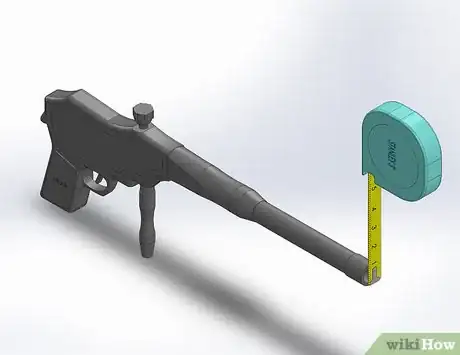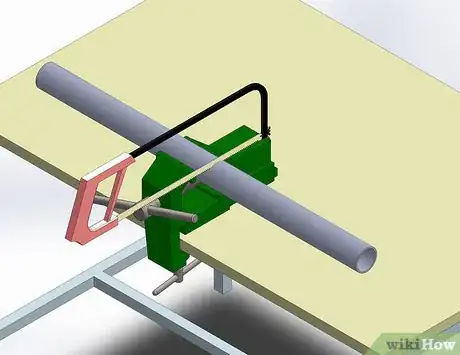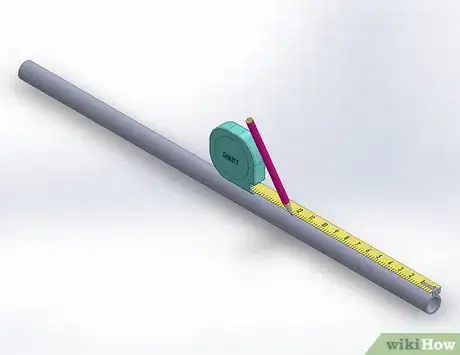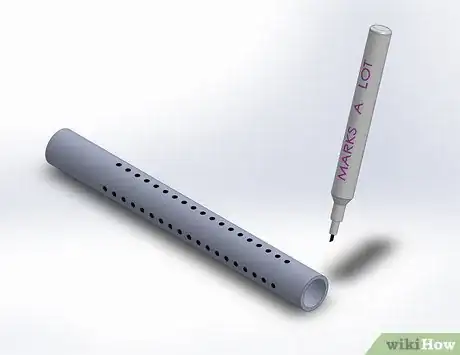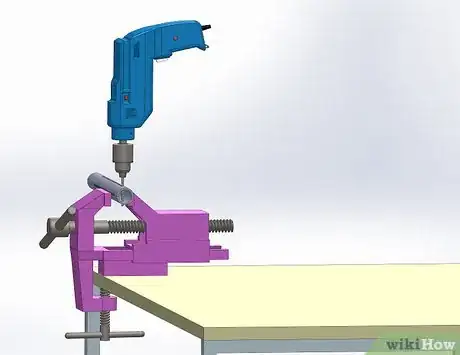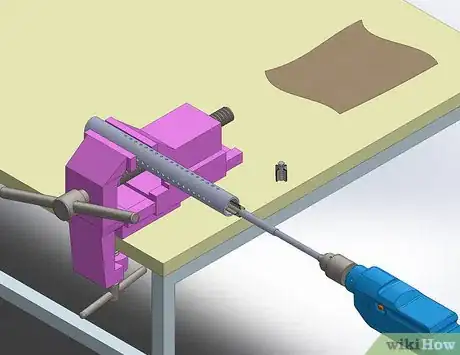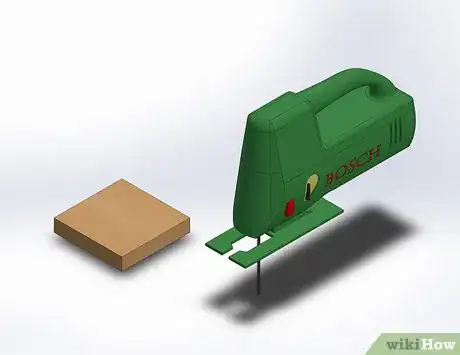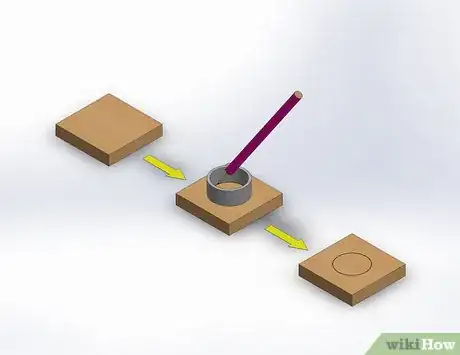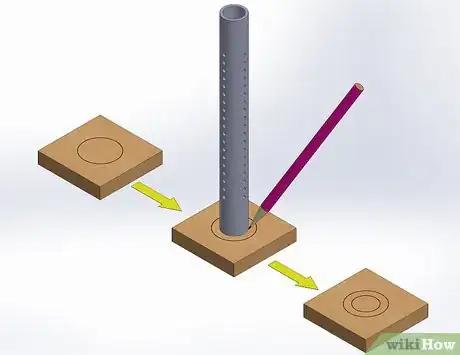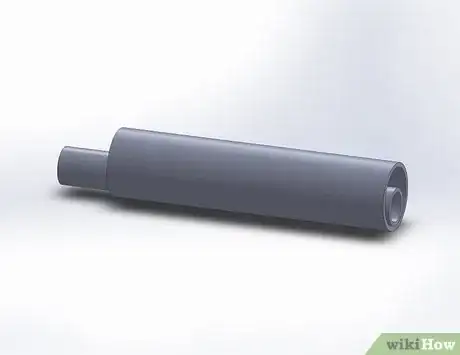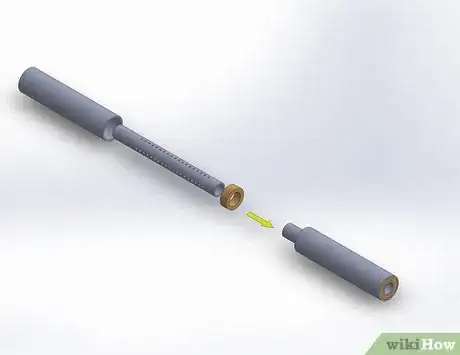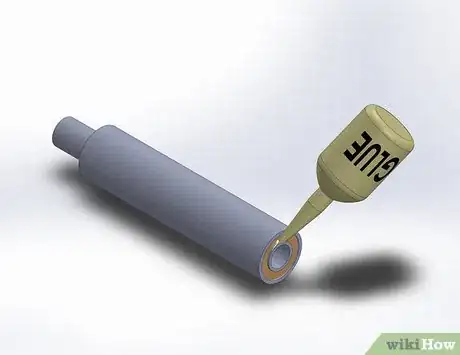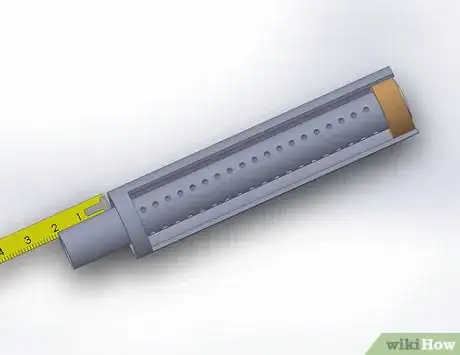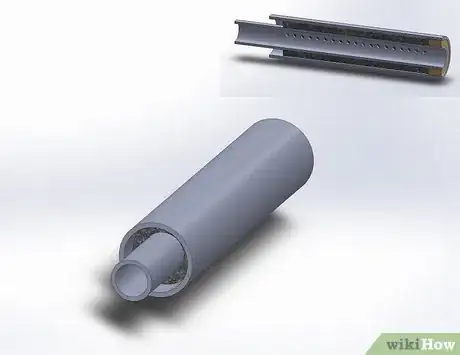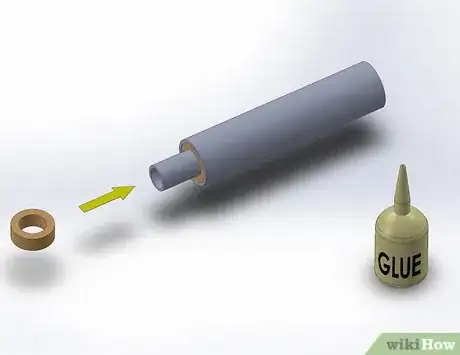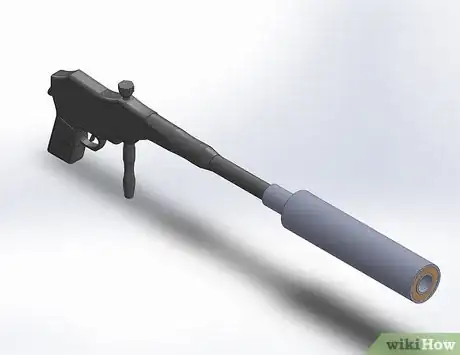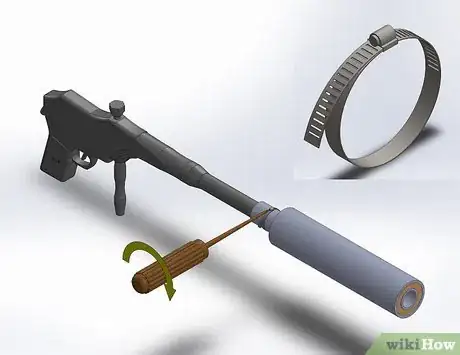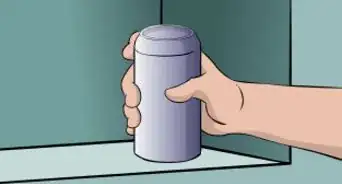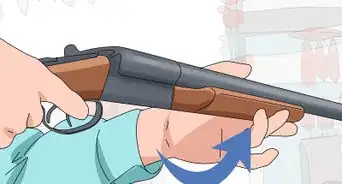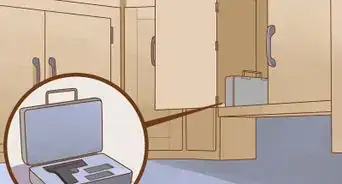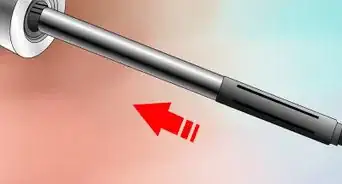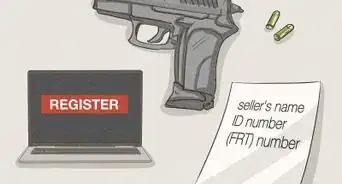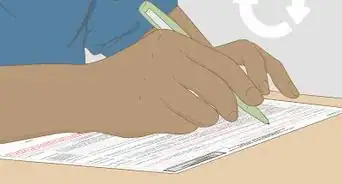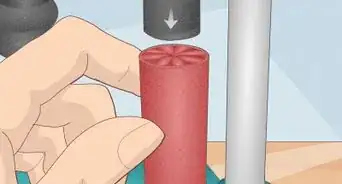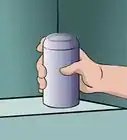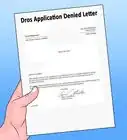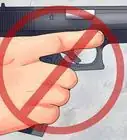wikiHow is a “wiki,” similar to Wikipedia, which means that many of our articles are co-written by multiple authors. To create this article, 19 people, some anonymous, worked to edit and improve it over time.
wikiHow marks an article as reader-approved once it receives enough positive feedback. This article received 12 testimonials and 87% of readers who voted found it helpful, earning it our reader-approved status.
This article has been viewed 1,054,758 times.
Learn more...
Suppressors, commonly referred to as "silencers," are devices fixed to the end of a firearm intended to muffle the sound of a shot being fired, not silence it. They are also used on paintball guns, and can make it more difficult for opposing players to identify your position. There are many different ways to make a paintball gun suppressor, many of which employ common household and hardware materials.
Note: It is illegal to build a silencer for anything that fires a projectile without a $200 tax stamp on a Form 1 under the National Firearms Act, unless you are a licensed Class 3 Firearms dealer. This article is for demonstration purposes only! Some counties/municipalities, states, and countries ban silencers altogether, and because many paintball gun suppressors can be used for firearms as well, they too may be illegal in your area. Check your municipality's, state's, and country's laws on this matter before proceeding.[1]
Steps
-
1Measure the diameter of the paintball gun's barrel. To do this, simply place one end of the measuring tape on the end of the barrel and measure straight up along the widest part of the circular barrel. This will give you the most accurate measurement of the diameter of the gun's barrel.
-
2Measure the distance across the barrel. Use measuring tape or a ruler to measure the entire distance across the barrel. In other words, do not just measure the hole.
-
3Purchase one piece of 1 inch (2.5 cm) PVC pipe, and one piece of 2 inch (5.1 cm) PVC pipe.[2] The inches refer to the width/diameter of the pipe, not the length. These pipes will create the framework for the suppressor.
-
4Cut the 2 inch PVC pipe to a length of 10 inches. You can cut the pipe using a handsaw, a hacksaw, a plastic pipe cutter, or a miter saw. Simply measure from one end of the pipe until you reach ten inches, mark the spot with a pencil, and then cut the pipe accordingly. Remember that if you measure twice, you'll only have to cut once.
-
5Cut the 1 inch (2.5 cm) PVC pipe to a length of 12 inches (30.5 cm). Just measure out until you've found the 12-inch mark, and mark it with a pencil. This will be your suppressor's barrel.
- Note: These lengths may be adjusted for different size paintball guns. Longer suppressors are more unwieldy, but may increase dampening effect. The suppressor's barrel should always be 2 inches (5.1 cm) longer than the other PVC pipe, no matter which measurements you use.
-
6Draw a line of drill holes down the suppressor barrel. Using magic marker, draw a line of drill holes down the suppressor barrel, evenly spaced with 1⁄4 inch (0.6 cm) between them. Use measuring tape to evenly measure the holes, and make sure to keep the line straight.
-
7Draw another line of drill holes down the barrel. Now, turn the suppressor barrel 1/4, or 90 degrees, and draw another line. Use the same technique you used to mark the holes the last time.
-
8Drill the holes with a 3⁄16 inch (0.5 cm) drill-bit. Do not stop when you drill through the first surface. Drill through to the other side, so that you can see straight through. When you are finished, you should have four lines of parallel drill holes.
- You can use a hand drill, but a drill press is preferable.
- Use a drill-bit of size appropriate to the size of your projectiles. The holes should be smaller than the projectiles.[3] Consult a permitted manufacturer to ensure that your drill-bit is the correct size.
-
9Sand the inside and outside of the suppressor barrel, and the inside of the 2 inch (5.1 cm) PVC pipe. Use a rotary tool or sandpaper to smooth out any imperfections.
-
10Create the end caps. If you have a jigsaw or scroll saw, you can make end caps from a piece of wood. If not, you can use thick cardboard or another sturdy material. Here is how you make the end caps:
- Trace a circle on the wood or cardboard around the 2 inch (5.1 cm) PVC pipe.
- Within this circle, trace around the suppressor barrel, creating a donut shape.
- Cut out the end caps. The end caps should fit securely around the barrel, and within the 2 inch (5.1 cm) PVC pipe.
-
11Slide the suppressor barrel into the larger pipe. The barrel should extend straight through the 2 inch (5.1 cm) PVC pipe to the other side.
-
12Attach the end cap securely around the barrel of the suppressor, within the PVC pipe. It should snugly fit in place.
-
13
-
14Stuff the space between barrel and 2 inch (5.1 cm) PVC pipe firmly with steel wool, cotton balls, heating insulation, or mattress foam. This will secure the two pieces of pipe, which are the two main parts of the suppressor, firmly in place.
-
15Add the other end cap. Secure it with crazy glue or caulking.
-
16Attach the barrel of the silencer to the barrel of your paintball gun. Neatly place the suppressor over the barrel of your paintball gun. This is why the suppressor has to be wider than the barrel of your gun, so that it can fit over it neatly.
-
17Secure the barrel with a 1/2 inch (5.1 cm) to 2 inch (5.1 cm) hose clamp. Just use the clamp to secure the barrel in place, and use a screwdriver to turn the screw that keeps it in position. You're all done! Again, just remember that this is an illegal suppressor unless it has been properly registered.
Community Q&A
-
QuestionDoes the gun barrel go into the suppressor the full two inches?
 Community AnswerWith this design it is recommended, but other designs may require something different, it mainly depends on weight. Just be sure that it's secured enough so that the suppressor is centered, otherwise you'll have terrible accuracy.
Community AnswerWith this design it is recommended, but other designs may require something different, it mainly depends on weight. Just be sure that it's secured enough so that the suppressor is centered, otherwise you'll have terrible accuracy. -
QuestionIs it legal for me to conceal a paintball gun?
 Community AnswerYou would need to consult your local laws as the answer could depend on your state, city, etc.
Community AnswerYou would need to consult your local laws as the answer could depend on your state, city, etc. -
QuestionDoes this work on an actual rifle?
 Community AnswerIt should, but you would have to modify it slightly. Make the spacers at 2-inch intervals between the steel wool.
Community AnswerIt should, but you would have to modify it slightly. Make the spacers at 2-inch intervals between the steel wool.
Warnings
- Make sure that your paintball arena allows homemade suppressors.⧼thumbs_response⧽
- Never point a paintball gun, or any other weapon used to fire projectiles, at a person, pet or flammable or breakable object, except in appropriate paintball events.⧼thumbs_response⧽
- Under ATF law It is illegal to build a silencer for anything that fires a projectile without a permit. Some states ban silencers altogether, and because many paintball gun silencers can be used for firearms as well, they too may be illegal in your area. Check your state's laws on this matter before proceeding.[5]⧼thumbs_response⧽
Things You'll Need
- Length of 2 inch (5.1 cm) PVC pipe
- Length of 1 inch (2.5 cm) PVC pipe
- Wood, sturdy cardboard or other sturdy material
- Rotary tool or sandpaper
- Hand drill or drill press
- Measuring tape or a ruler
- Marker
- Saw
- Steel wool, cotton balls, mattress foam or heating insulation
References
- ↑ https://www.atf.gov/file/58141/download
- ↑ https://www.skilledsurvival.com/gun-suppressors/
- ↑ https://robrobinette.com/suppressor.htm
- ↑ https://www.pyramydair.com/article/Airgun_silencers_What_s_the_big_deal_August_2006/32
- ↑ https://www.pyramydair.com/article/Airgun_silencers_What_s_the_big_deal_August_2006/32
- http://www.atf.gov/files/forms/download/atf-f-5320-1.pdf
